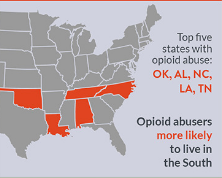A letter from Perry Solomon, MD, was one of four that ran in the Wall St. Journal’s print edition April 2 in response to an essay about opioids being overprescribed. All four letters made good points. Solomon alone achieved product placement (for Hello MD), and it was a line from his letter that the editor chose in the headline for the quartet.
Thoughts on Our Growing Opioid Problem
Dr. Marc Siegel fails to mention any alternative to opioids that a physician can use for treatment of their patients chronic pain.
• Dr. Marc Siegel should spend less time at the podium and more time seeing real people with real pain “Opioids Shouldn’t Be a Doctor’s First Resort,” op-ed, March 29). To describe patients as suffering “from little more than muscle spasms” shows a disconnect. I have no doubt that anyone who has experienced those back spasms that literally bring a person to his or her knees in writhing pain would happily take a cattle prod to Dr. Siegel’s lumbar region and toss him a heating pad on the way out the door.
It’s also getting a little tiresome that the sensible majority in this country keeps getting their hands slapped because of the cluelessness of a small segment of the population and their enablers.
Allan Mentgen Colleyville, Texas
• Once addicted to opioids, 27% of addicts continue to satisfy their habits through physician prescriptions, the other 73% go illegal. Why not make access to all habit-forming drugs legal and cut the legs off illegal black marketeers? The quality of addictive drugs and dosages would become precise to users. Accidental overdosing, and accompanying deaths, would fall substantially. The availability of kits to self-administer countermeasures to the effects of the drugs would become known, easily available and used. Funds to educate and treat addicts could be raised through user taxes similar to those now levied on tobacco. Heck, put a skull and crossbones on the packaging! Simple, practical, but unlikely.
• Jaime L. Manzano Bethesda, Md.
I am surprised Dr. Siegel fails to mention any alternative to opioids that a physician can turn to for treatment of their patients chronic pain. In all the 29 states and the District of Columbia where cannabis is recognized as an acceptable and legal medication which patients can use to treat many types of ailments, chronic pain is a listed medical condition in most of them. The National Academy of Sciences pronounced in January of this year, after review of thousands of published studies, that cannabis was indeed an effective modality to reduce chronic pain.
There are more and more physicians attending meetings where cannabis is discussed and research is presented, which is encouraging. I hope this education and interest will result in decreasing the number of opioid prescriptions written by physicians and offer a viable alternative they can discuss with their patients.
Perry Solomon, M.D. HelloMD.com San Francisco
• Medical insurance-plan policies promote opioid use. I recently prescribed celecoxib (Celebrex) for pain for a patient who was unable to take non-steroidal anti-inflammatory drugs such as ibuprofen. Her insurance company refused to cover celecoxib without a lengthy prior authorization process, including documentation that she had adverse reactions to five NSAIDs, any of which would have been dangerous. Any opioid would have been covered automatically without a prior authorization. Fortunately my patient was able to pay for celecoxib herself. Not everyone has that option.





